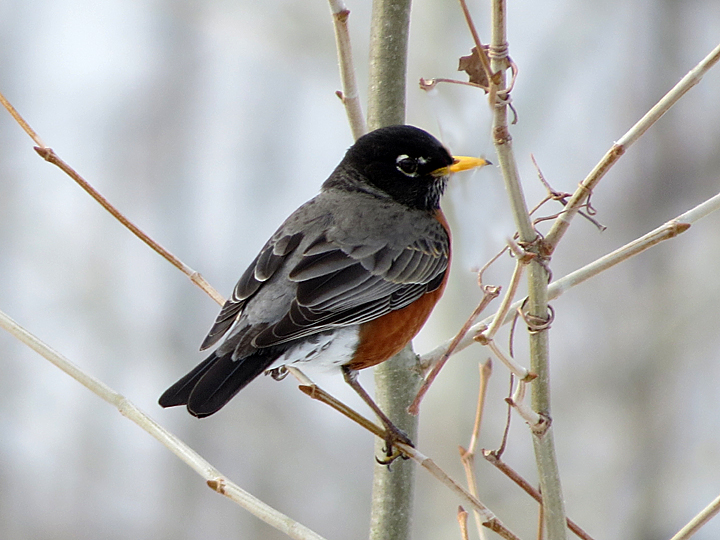Mariton: Learning Bird Songs, Part IV
by Tim Burris, Preserve Manager. Photos by Carole Mebus.
Learning bird songs with the help of knowledgeable person is really handy and can save one a lot of time. In Part I, I talked about learning the mnemonics of bird songs with someone that can point them out as you walk along.

American Robin
In Part II, I talked about hearing the difference between the voices of different species. The difference between the sore throat singing of a Scarlet Tanager from the clear whistling of an American Robin are subtle differences, but ones that several people hear when they learn to listen.

Scarlet Tanager
Not everyone has access to other birders to help them learn. And there is a lot to be said for investing your own time learning bird songs.
One thing that helped me learn bird songs was watching a bird sing its song. Spending a lot of time tracking down a singer with binoculars and then watching it sing really imprinted that song and species in my mind. The harder I had to work to find the bird increased how solidly the song was imprinted. So, it is worthwhile spending some mornings with binoculars tracking down a bird by yourself. Watching them sing once you find them really helps lock them in your memory.
I also spent a lot of time listening to Peterson’s Bird Songs (the LP vinyl record, before there were CDs). This was long before video series, websites and bird song apps for phones. I would spend hours listening to certain tracks over and over (which meant setting down the needle in the right groove each time). Then I would go for a walk and try to make matches. If I heard a song I couldn’t identify, I would try to memorize it until I got back (before you could record it on your phone), and then listen to the record all over again. Like finding the singer, I had to invest a lot of time, and that effort probably made the song easier to remember.
Taking notes helps also. I’m one of those people that if I write something down, I will remember it a lot longer. For people that have trouble hearing mnemonics it might be useful to write down what you hear, even if it is just squiggles. The sonographs being used in some bird guides mean nothing to me, but they obviously help people interpret bird songs. Or you might be that person that benefits by making a quick sketch of a bird.
You can learn a ton from someone else, but when you invest your own time you won’t want to forget it. As I end this series on bird songs it is the Ideal time to get out and start learning. On Tuesday mornings, the Mariton Bird Club goes to different locations looking for birds and sharing our knowledge with each other.
